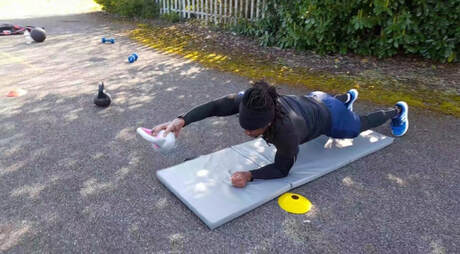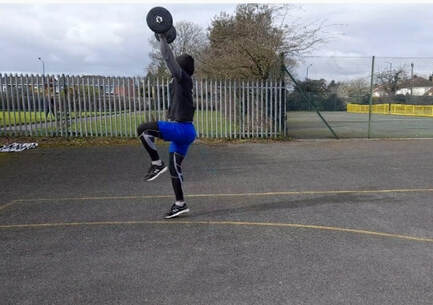 Eating too much sugar can contribute to people having too many calories, which can lead to weight gain. Being overweight increases your risk of health problems such as heart disease, some cancers and type 2 diabetes. Cutting down your consumption of sugar can help protect your health in the long term. Sugar-heavy diets have been linked to health conditions, including obesity, diabetes, and heart disease. Most people in the world today eat far too much sugar. A W.H.O health and diet survey from 2015–2020 found that the average person eats about 17 teaspoons of sugar a day. The Dietary Guidelines recommend to eating no more than the equivalent of 12 teaspoons of sugar a day, and the Numerous Heart Association suggests no more than the equivalent of six teaspoons per day. To cut down on your sugar consumption, your first goal should be to focus on incorporating more whole, unprocessed foods into your daily die, try to get most of your daily in takes from natural sugar such as fruits or raw molasses. Eating more of these foods can crowd out processed sources of added sugars in your diet. The second goal should be to become a label reader. Before you choose a product, scan the label to see if it has added sugars. Try to find products that are low in added sugars whenever possible. There can be a lot of sugar hiding in foods that don't even taste particularly sweet. This includes salad dressings, marinades, and condiments, such as barbeque sauce and ketchup. Other seemingly healthy foods that may be high in sugar are granola bars, yogurt, and even salsa. Reducing the amount of sugar, you eat can be difficult. Some experts recommend a gradual approach to make the process easier.
0 Comments
 You might have heard some people refer to it as a spare tire, a muffin top, or love handles, having a roll of fat around your waist is common. But even if you're not overweight, a bulging midriff may raise your risk of heart disease. Despite the many ads that tout "one simple trick" to lose belly fat, there's no getting around it: whittling down your waistline takes a bit of effort. One important step is strengthening your core, which includes the muscles in your abdomen, back, sides, pelvis, and buttocks. However, a strong core is only part of the picture. You can't lose belly fat by exercising only your abdominal muscles. To lose fat anywhere on your body, you need a combination of aerobic exercise and strength training, plus a healthy, portion-controlled eating plan. Focus On Core Strength All forms of exercise help burn calories, aiding weight loss. But including core-strengthening exercises in your workout is important for several reasons. First, many sports and other athletic pursuits are powered by a strong core, including golfing, tennis and other racquet sports, biking, running, swimming, baseball, volleyball, kayaking, and rowing. Developing core muscle strength may make your exercise stints more effective — and maybe even more enjoyable. Second, having a strong core helps improve balance, which lowers your risk of falling. It may also prevent other injuries, such as muscle strain or spasms in the lower back. Well-developed core muscles help stabilize your spine, helping to create a firm base of support for virtually all movement, including everyday moves like reaching up to a shelf or wiping up a spill on the floor. Competence Of The Core The best exercises for your core target several groups of muscles at a time, such as the plank, Dead Bugs, Bear Crawls which builds muscles in the abdomen, back, and side. When planning your core exercises, it’s always best to planned it throughout your sessions rather than leave it for the very end. If you are doing just a core session its always best to includes a wide range of core exercises with some cardio movements ( Ie. Mountain Climbers) Core Strength Training Session Program 10 Exercises 4 Rounds 30 seconds work each exercise 10 seconds rest Star Jumps Plank Walk Out Reverse Crunches Bear Crawl Hold Mountain Climbers Side Planks V-Ups High Plank Static Hold Burpee Sprawls Side Crunches  you are looking to trim your waistline, get rid of extra body fat or get totally ripped, combining both strength training and cardio into your workout regimen is key. For cardio junkies, like myself I found out that if you are incorporating a strength-training routine can help you improve your form, endurance, and daily calorie burn. Adding muscle has the benefit of increasing the efficiency of movement, allowing you to go farther and move with more power. The added muscle also has the benefit of increasing your metabolism. Thus, by adding strength training, you can break through weight-loss plateaus and/or your personal record time. Conversely, if you are one those who always in the weight room, you will find that incorporating cardio is a more effective way of burning off body fat than weight training alone. Certain brands of cardio, such as HIIT and TABATA will also help you build muscle – not deteriorate it. Combining cardio and strength training can also complement each other, even when done on the same day. That is, studies show that strength training does not negate the gains of endurance training when done on the same day. Likewise, cardio will not negate the growth of muscles when done on the same day. To effectively combine strength training and cardio. Two Best Method Of How To Combine Cardio and Strength Training High Intensity Interval Training (HIIT) HIIT is by far the most efficient way to burn fat, burn calories, and improve aerobic capacity. For instance, a 10-minute HIIT routine can burn as many calories as 30 minutes on the treadmill. Another study by the American College of Sports Medicine found that engaging in just two weeks of HIIT is equivalent to six to eight weeks of endurance training. You might be wondering what exactly is it? HIIT combines super high-intensity cardio with recovery intervals (like strength training exercises) at a 1:4 ratio. High-intensity intervals are at 80% of your maximum capacity, while recovery intervals are around 40% of your maximum capacity. An example of an interval cycle can include one minute of mountain climbers, followed by one minute each of squats, Deadlifts, Press Ups , and Planks. Repeat this cycle four to six times or follow up with different 1:4 combinations. Train Every Major Muscle Group Once Per Week If you are a cardio junkie Like me, then you should looking to incorporate strength training, keep in mind you need to train every muscle group – core, legs, back, etc. – once per week. By training every muscle group, you’ll be maintaining physical balance. You’ll also be reducing your risk of injury by not over training. Muscles need between 48 – 72 hours to fully recover and grow from resistance training. Without that rest, training muscles too frequently will lead to atrophy and/or loss of strength. One strategy is to intensely hit one major muscle group for a 30-minute workout for five out of seven days per week. Another strategy is to do a longer full-body workout, two days per week. Either way, you can do the strength training workout alone, or before your cardio session that day. Most experts agree that strength training is best before cardio to ensure you have enough energy to perform the exercises with proper form. Note, however, if you’re an endurance athlete, a study on endurance runners suggests you should combine the two only on days the cardio will be at “submaximal intensities.” The study found a strength training session of the lower extremities can hamper a hard run for up to 24 hours but has no effect on light or moderate running sessions.  Over the past few years functional training as risen to the fore front of fitness for gym users and fitness individuals, you may have heard or seen functional training, but do you really know what it is and the benefits? Simply put it, functional training involves improving your body to better perform your daily activities. Human movement doesn’t usually use one muscle group at a time, whereas typical gym routines focus on one muscle group. Functional training also aids the body to reduce body fat and build stronger lean muscle. Functional Training originates from rehabilitation when physical therapists set their patients exercises to increase their fitness and strength back to a level for them to return to their lives or jobs after their injury. Benefits Reduces injuries Do you find yourself struggling with injuries? With functional training exercises, not only are your muscles strengthened, but also the surrounding ligaments that can often become injured through tightness or weakness. As the exercises are low impact training, the chances of injuries during training are also decreased. Another advantage of functional training being low impact means it is a great starting point for new members because it improves your strength without causing too much stress to your body. Improves Moods As mentioned, functional training involves improving your body to better perform your daily activities. Over time, your daily activities should become easier which should improve your quality of life. You will also become more motivated to continue with the training and become more confident to move on to different exercises or take part in our classes such as one of our boxing class or out door training sessions. Improves balance and posture As functional training doesn’t involve machines, you need to rely on your own balance and core strength to complete the exercises. With the exercises using multiple muscles to enhance your strength and balance, your overall posture will also improve. A good posture is important for your health, it will also decrease back pain and reduce stress on other parts of your body. Improvements of your everyday life With exercises designed for you and targeting movements you make every day, your strength and endurance will improve and will allow you to complete your everyday activities with more ease which in turn should increase your quality of life. Functional Training Sample Program Mobility Warm Up
30 seconds work 15 seconds rest each exercise ( 4 Rounds)
|
AuthorsThis blog is updated by Tranquillity 360 fitness personal trainers, as well as other guest bloggers. Archives
July 2021
Categories |

 RSS Feed
RSS Feed